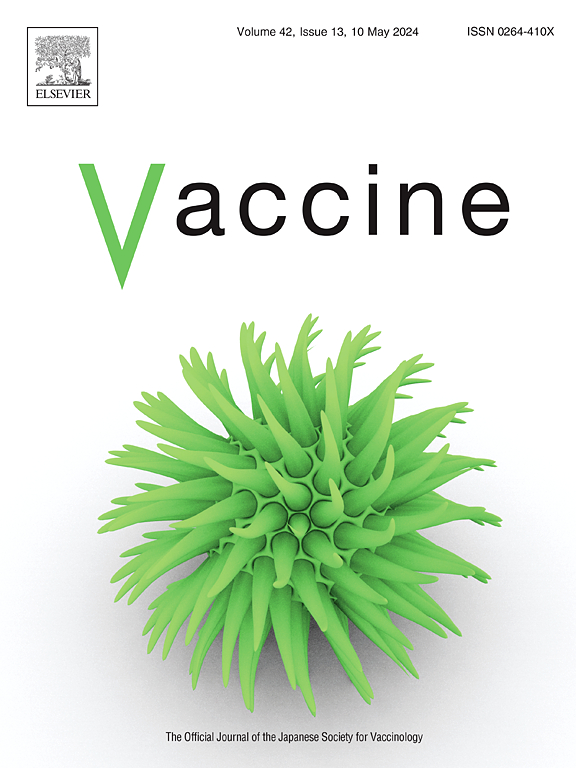The efficacy and safety of SYN023 (Zamerovimab and Mazorelvimab injection), the recombinant humanized anti-rabies virus monoclonal antibody mixture, combined with rabies vaccine in a WHO category III rabies post-exposure population: A randomized, double-blind, positive control, phase III clinical trial.
IF 4.5
3区 医学
Q2 IMMUNOLOGY
引用次数: 0
Abstract
Background
The SYN023–006 study was conducted in WHO Category III rabies-exposed patient populations to assess the safety and efficacy of post-exposure prophylaxis that included either the monoclonal antibody mixture SYN023 or human rabies immunoglobulin (HRIG).
Methods
This phase 3, double-blind, randomized, controlled trial was conducted at multiple clinical disease control sites in China. Patients were randomized 3:1 (stratified by study site) to wound infiltration with 0.3 mg/kg SYN023 or 20 IU/kg HRIG. All patients received thorough wound washing and 5 doses intramuscular Vero cell rabies vaccine. The composite primary study objective was to demonstrate: 1) superiority of Day 8 geometric mean (GM) concentration of serum rabies virus neutralizing antibodies (RVNA) with SYN023 versus HRIG (protocol-defined superiority margin: GM RVNA ratio 95 % confidence interval [CI] lower limit >1.2) and 2) no rabies in SYN023 recipients. Efficacy was evaluated in the Per-Protocol population. Safety endpoints included solicited and unsolicited adverse events (AEs) analyzed in all patients receiving any study treatment. Trial registration: ClinicalTrials.gov NCT04644484.
Results
From 23 September 2020 to 26 June 2021, 537 male and 463 female patients were randomized (n = 750 SYN023, n = 250 HRIG). Day 8 GM RVNA was 4.339 IU/mL (standard error [SE]: 1.035) with SYN023 and 0.232 IU/mL (SE: 1.060) with HRIG. The SYN023:HRIG GM RVNA ratio was 18.695 (95 % CI: 16.440, 21.260) indicating superior RVNA with SYN023. No suspected rabies cases or deaths occurred. AEs were generally similar between treatment groups except greater local solicited AEs frequencies with HRIG (SYN023: 165/750 patients [22.0 %]; HRIG: 97/250 [38.8 %]).
Conclusion
This study indicates that SYN023, a monoclonal antibody product, may be used as part of rabies post-exposure prophylaxis and provides superior protection sooner after exposure than HRIG.
重组人源抗狂犬病毒单克隆抗体混合物SYN023 (Zamerovimab and Mazorelvimab注射液)联合狂犬病疫苗在WHO III类狂犬病暴露后人群中的有效性和安全性:一项随机、双盲、阳性对照的III期临床试验。
SYN023 - 006研究是在世卫组织III类狂犬病暴露患者人群中进行的,目的是评估暴露后预防的安全性和有效性,预防包括单克隆抗体混合物SYN023或人狂犬病免疫球蛋白(HRIG)。方法该3期、双盲、随机对照试验在中国多个临床疾病控制中心进行。患者按3:1(按研究地点分层)随机分为0.3 mg/kg SYN023或20 IU/kg HRIG创面浸润组。所有患者均接受彻底的伤口清洗和5剂肌肉注射Vero细胞狂犬病疫苗。该综合研究的主要目的是证明:1)与HRIG相比,SYN023的第8天血清狂犬病毒中和抗体(RVNA)的几何平均浓度(GM)更优越(方案定义的优势边际:GM RVNA比值95%置信区间[CI]下限[gt;1.2]); 2) SYN023受体未出现狂犬病。在按方案人群中评估疗效。安全性终点包括在接受任何研究治疗的所有患者中分析征求和非征求的不良事件(ae)。试验注册:ClinicalTrials.gov NCT04644484。结果从2020年9月23日至2021年6月26日,随机抽取537例男性和463例女性患者(n = 750例SYN023, n = 250例HRIG)。第8天,SYN023组的RVNA为4.339 IU/mL(标准误差[SE]: 1.035), HRIG组的RVNA为0.232 IU/mL(标准误差[SE]: 1.060)。SYN023:HRIG GM RVNA比值为18.695 (95% CI: 16.440, 21.260),表明SYN023的RVNA更优越。未发生狂犬病疑似病例或死亡。各治疗组之间的不良事件发生率基本相似,但HRIG组的局部不良事件发生率更高(SYN023: 165/750例患者[22.0%]);Hrig: 97/250[38.8%])。结论单克隆抗体SYN023可作为狂犬病暴露后预防的一部分,在暴露后较短时间内具有较好的保护作用。
本文章由计算机程序翻译,如有差异,请以英文原文为准。
求助全文
约1分钟内获得全文
求助全文
来源期刊

Vaccine
医学-免疫学
CiteScore
8.70
自引率
5.50%
发文量
992
审稿时长
131 days
期刊介绍:
Vaccine is unique in publishing the highest quality science across all disciplines relevant to the field of vaccinology - all original article submissions across basic and clinical research, vaccine manufacturing, history, public policy, behavioral science and ethics, social sciences, safety, and many other related areas are welcomed. The submission categories as given in the Guide for Authors indicate where we receive the most papers. Papers outside these major areas are also welcome and authors are encouraged to contact us with specific questions.
 求助内容:
求助内容: 应助结果提醒方式:
应助结果提醒方式:


